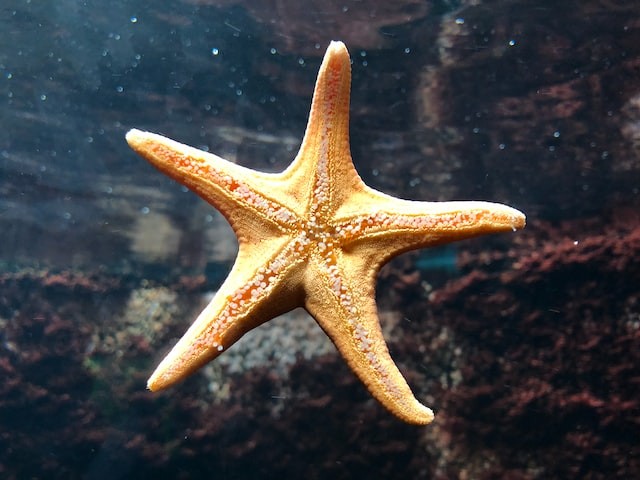Invertebrate genomes of various species were examined to look for genes encoding proteins connected to the human kisspeptin receptor.
This showed that genes for kisspeptin-type receptors are present in a variety of invertebrate species, such as mollusks (such as snails), annelids (such as earthworms), and echinoderms
Impact of puberty hormones in starfish
 (Photo : Clara Cordero/Unsplash)
(Photo : Clara Cordero/Unsplash)

Based on their findings, the researchers hypothesized that kisspeptin and its receptor must have evolved in a common ancestor of the Bilateria-creatures that display bilateral symmetry throughout their life cycle, which includes the majority of animals on Earth-at least half a billion years ago, as per Phys.org.
The researchers also found that some animals, like starfish, have several genes that encode kisspeptin-type receptors, whereas other animals, like insects, don't due of gene loss throughout their evolutionary history. This contrasts with humans, who only have one kisspeptin receptor gene.
Dr. Nayeli Escudero Castelán described how this portion of the study was carried out as part of her Ph.D. studies at Queen Mary University of London.
Starfish kisspeptin-type receptor genes were cloned to enable their expression in cells that trigger the production of light when a chemical attaches to and activates one of the receptors.
This allowed us to identify the chemicals that bind to six of the starfish's eleven kisspeptin-type receptors and function as their ligands.
Additionally, kisspeptin-related compounds called SALMFamides, which were initially identified in starfish over thirty years ago, long before kisspeptin was identified as a human puberty hormone, have evolved specifically in starfish and members of their genus.
This subject is being investigated through ongoing study to see if there is any proof that kisspeptins have regulated sexual reproduction in starfish since the beginning of evolution.
SALMFamides, on the other hand, control the peculiar extra-oral eating habit of starfish by inducing the eversion of their stomach out of the mouth, providing indications of functions in other biological processes.
Therefore, zoological research is altering our understanding of kisspeptin as a human puberty hormone by illuminating its intricate evolutionary history and offering fresh perspectives on its actions and connections to other molecules found in other animals.
Read More: Farm Animals, According to Children, Are Entitled to the Same Attention as Pets
Kisspeptin hormone
A protein found in the hypothalamus is called kisspeptin (a part of the brain that controls the release of several important hormones in the body, as per You And Your Hormones.
The regulation of reproductive hormones in both men and women is greatly influenced by kisspeptin. Kisspeptin specifically controls the hypothalamic release of the gonadotrophin-releasing hormone (GnRH).
Luteinizing hormone (LH) and follicle-stimulating hormone (FSH), which are produced by the pituitary gland, are then stimulated to release into the bloodstream by GnRH.
These two hormones work on men's testicles and women's ovaries to create the sex-steroids testosterone and oestradiol, respectively.
The hormones testosterone and oestradiol are in charge of the mental and emotional changes that happen during puberty in order to prepare a person for maturity.
Along with two additional proteins, neurokinin B and dynorphin, kisspeptin is released from nerve cells in the hypothalamus. Kisspeptin, Dynorphin, and Neurokinin B are produced by nerve cells, which is why they are collectively referred to as KNDy (pronounced candy).
These proteins are thought to work together to cause the pulsing release of GnRH, which is crucial for its capacity to stimulate LH and FSH.
Related Article: 'Love Hormone' Has Stomach-Turning Effect in Starfish
© 2024 NatureWorldNews.com All rights reserved. Do not reproduce without permission.

![Tsunami Hazard Zones: New US Map Shows Places at Risk of Flooding and Tsunamis Amid Rising Sea Levels [NOAA]](https://1471793142.rsc.cdn77.org/data/thumbs/full/70325/280/157/50/40/tsunami-hazard-zones-new-us-map-shows-places-at-risk-of-flooding-and-tsunamis-amid-rising-sea-levels-noaa.jpg)



